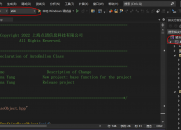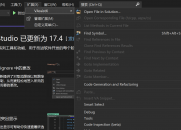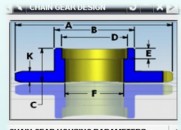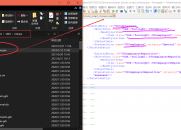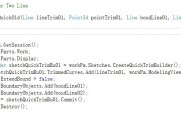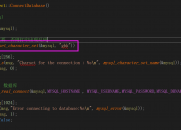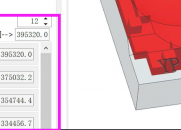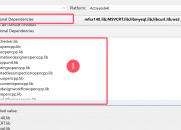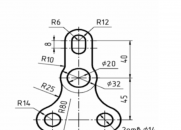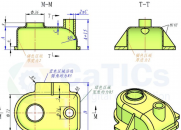请使用QQ关联注册PLM之家,学习更多关于内容,更多精彩原创视频供你学习!
您需要 登录 才可以下载或查看,没有账号?注册

x
由于查找是使用最为频繁的功能之一,string 提供了非常丰富的查找函数。其列表如下:7 s( I3 z0 i) Y6 b( X5 I. H7 o
函数名 | 描述 | | find | 查找 | | rfind | 反向查找 | | find_first_of | 查找包含子串中的任何字符,返回第一个位置 | | find_first_not_of | 查找不包含子串中的任何字符,返回第一个位置 | | find_last_of | 查找包含子串中的任何字符,返回最后一个位置 | | find_last_not_of | 查找不包含子串中的任何字符,返回最后一个位置 |
) P" V. z! S0 u8 z* L以上函数都是被重载了4次,以下是以find_first_of 函数为例说明他们的参数,其他函数和其参数一样,也就是说总共有24个函数。
" H% H3 O9 i& F9 ?( x" P* J
' l( ~: ^3 F* z* k
+ _/ u, b- c6 D- size_type find_first_of(const basic_string& s, size_type pos = 0)
- size_type find_first_of(const charT* s, size_type pos, size_type n)
- size_type find_first_of(const charT* s, size_type pos = 0)
- size_type find_first_of(charT c, size_type pos = 0)
6 ]+ O5 B& [2 r6 b
) h" B7 x" } |size_type find_first_of(const basic_string& s, size_type pos = 0)size_type find_first_of(const charT* s, size_type pos, size_type n)size_type find_first_of(const charT* s, size_type pos = 0)size_type find_first_of(charT c, size_type pos = 0)
3 M% I1 K) l! b4 c9 ?& x8 p) n
" d3 ?1 Z% I {' Y' Y所有的查找函数都返回一个size_type类型,这个返回值一般都是所找到字符串的位置,如果没有找到,则返回string::npos。有一点需要特别注意,所有和string::npos的比较一定要用string::size_type来使用,不要直接使用int 或者unsigned int等类型。其实string::npos表示的是-1, 看看头文件:: X' W" X4 Y$ ?4 ^9 U; p
* f# l3 L) e% i
, \' m- k8 h' `$ K& z
- template <class _CharT, class _Traits, class _Alloc>
- const basic_string<_CharT,_Traits,_Alloc>::size_type
- basic_string<_CharT,_Traits,_Alloc>::npos
- = basic_string<_CharT,_Traits,_Alloc>::size_type) -1;
! ^5 x( r* p" S) K* M7 }
6 |3 i: R/ @9 o* _) Z+ _
template <class _CharT, class _Traits, class _Alloc> const basic_string<_CharT,_Traits,_Alloc>::size_type basic_string<_CharT,_Traits,_Alloc>::npos = basic_string<_CharT,_Traits,_Alloc>::size_type) -1; ! {: p" x# A( h) v4 \
0 j4 U* d6 w/ m( e) jfind 和 rfind 都还比较容易理解,一个是正向匹配,一个是逆向匹配,后面的参数pos都是用来指定起始查找位置。对于find_first_of 和find_last_of 就不是那么好理解。 find_first_of 是给定一个要查找的字符集,找到这个字符集中任何一个字符所在字符串中第一个位置。或许看一个例子更容易明白。 有这样一个需求:过滤一行开头和结尾的所有非英文字符。看看用string 如何实现:
; m3 A8 ?% O: g% B+ K B
& n7 r- \; \" @: O- #include <string>
- #include <iostream>
- using namespace std;
- int main(){
- string strinfo=" //*---Hello Word!......------";
- string strset="ABCDEFGHIJKLMNOPQRSTUVWXYZabcdefghijklmnopqrstuvwxyz";
- int first = strinfo.find_first_of(strset);
- if(first == string::npos) {
- cout<<"not find any characters"<<endl;
- return -1;
- }
- int last = strinfo.find_last_of(strset);
- if(last == string::npos) {
- cout<<"not find any characters"<<endl;
- return -1;
- }
- cout << strinfo.substr(first, last - first + 1)<<endl;
- return 0;
- } 3 S, k% c, v, y
5 m( z; A- z& W. H# V p
#include <string>#include <iostream>using namespace std;int main(){ string strinfo=" //*---Hello Word!......------"; string strset="ABCDEFGHIJKLMNOPQRSTUVWXYZabcdefghijklmnopqrstuvwxyz"; int first = strinfo.find_first_of(strset); if(first == string::npos) { cout<<"not find any characters"<<endl; return -1; } int last = strinfo.find_last_of(strset); if(last == string::npos) { cout<<"not find any characters"<<endl; return -1; } cout << strinfo.substr(first, last - first + 1)<<endl; return 0;}# ^% _2 ^. y# O E- |
6 l0 z X# E; I+ N9 f
3 B( A4 i$ z% E! W2 D
' Q( L3 J# Y) P: M9 ]/ S/ ? |


